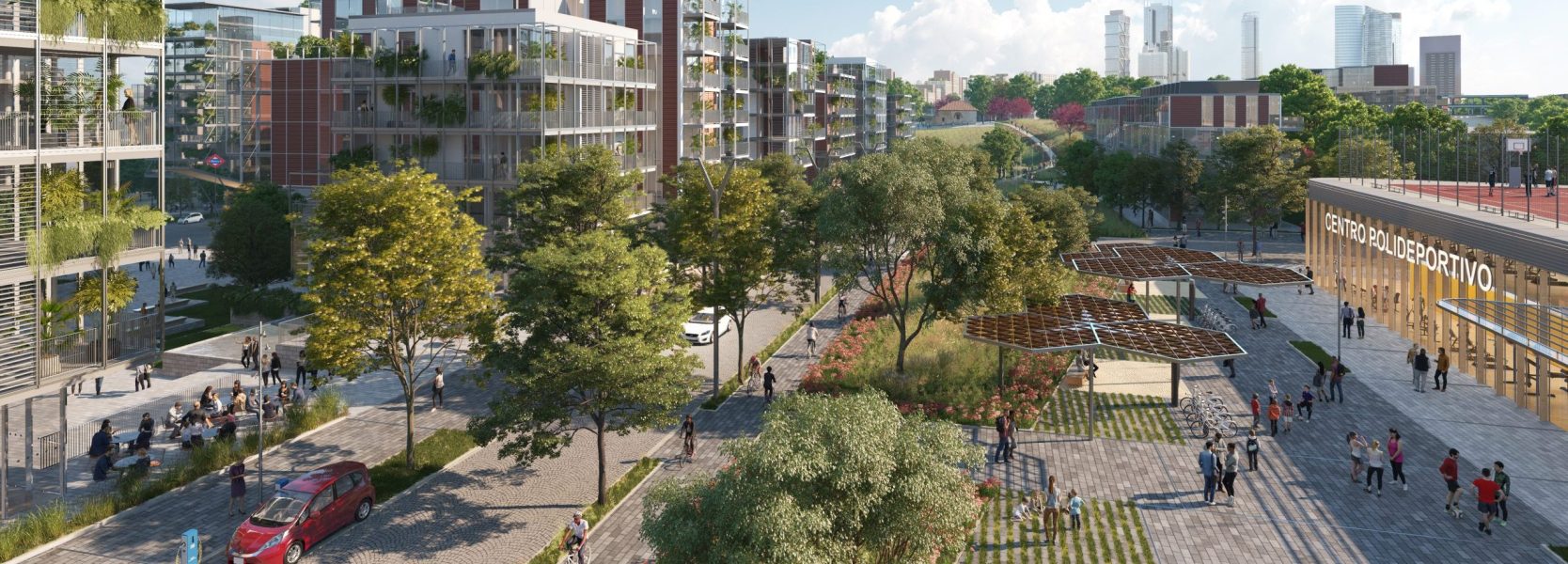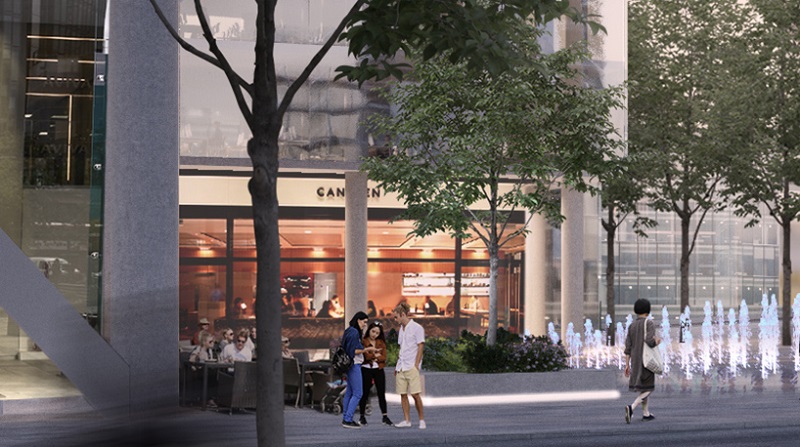8 June 2020
for Madrid Nuevo Norte

New, large-scale urban projects, such as Madrid Nuevo Norte, constitute a unique opportunity to determine what we want our cities to look like in the future. One of the things that most directly conditions citizens’ daily life is how we move around and how much time we spend doing so. Walking- and cycling-friendly urban settings have considerable merits versus scattered areas that necessarily require the use of a car or other means to move around. Madrid Nuevo Norte, the large urban regeneration project of the capital, has borne this in mind, integrating this idea into its design from the outset.
The ability to find everything you need within walking distance has become an increasingly important issue for the quality of life of urban citizens. To walk the environment in which we live and work should be a commonplace, ordinary thing. Yet, it is neither common nor evident if we take into account the way many new neighbourhoods have been designed in recent decades. Side-walks with obstacles, insufficient shade in the summer, car-centric streets… the design of streets clearly affects the daily life of pedestrians. For this reason, Madrid Nuevo Norte has made pedestrian mobility a priority. The layout and size of streets, avenues and squares take account of the people who will use them. Furthermore, the project includes a network of linear parks and interconnected green areas, designed to ensure that people can walk comfortably through the new development.
However, a human-scale public space with a quality design is not all that is necessary to encourage people to walk daily. The total distance to be travelled and the time spent in doing so are important factors when deciding whether to use the car, the public transport or simply walk to our destination. Madrid Nuevo Norte combines houses, offices, shops, schools, health centres, sports facilities and green areas in the same space. A variety of uses that coexist within walking distance. An urban model designed to have all we need within minutes. Experts call this “density, compactness and mixed-uses”. Putting it more simply: have everything at hand.
The project also includes a 13-kilometre bike lane network to encourage the use of bicycles to complement walking, both within the future neighbourhood and to travel to nearby areas.

Madrid Nuevo Norte is designed to ensure that walking and cycling is a convenient method of travel.
Health benefits are among the many advantages of this “soft mobility”, as it encourages a heart-healthy lifestyle and active use of public spaces. One of the goals outlined in the United Nations 2030 Agenda for Sustainable Development is “ensuring a healthy life and encouraging well-being for everyone, at all ages”. The international organisation emphasises the need to reduce illnesses such as cancer and heart disease, which cause millions of deaths each year.
Aside from reducing a sedentary lifestyle and having a positive impact on mental and physical health, walking and cycling contribute to cleaner air and less noise pollution. According to the Ministry for Ecological Transition, combustion engine vehicles release an average of 121 grams of CO2 per transported person and kilometre. Urban buses and the metro produce 49 and 30 grams of CO2, respectively, which represents a significant reduction. Meanwhile, the only carbon dioxide released by walking is the one we exhale when we breathe out. Since we also produce carbon dioxide when we use other means of transport, the net emission is close to zero. As if that were not good enough, walking takes up much less space than a car, which helps to reduce urban congestion.